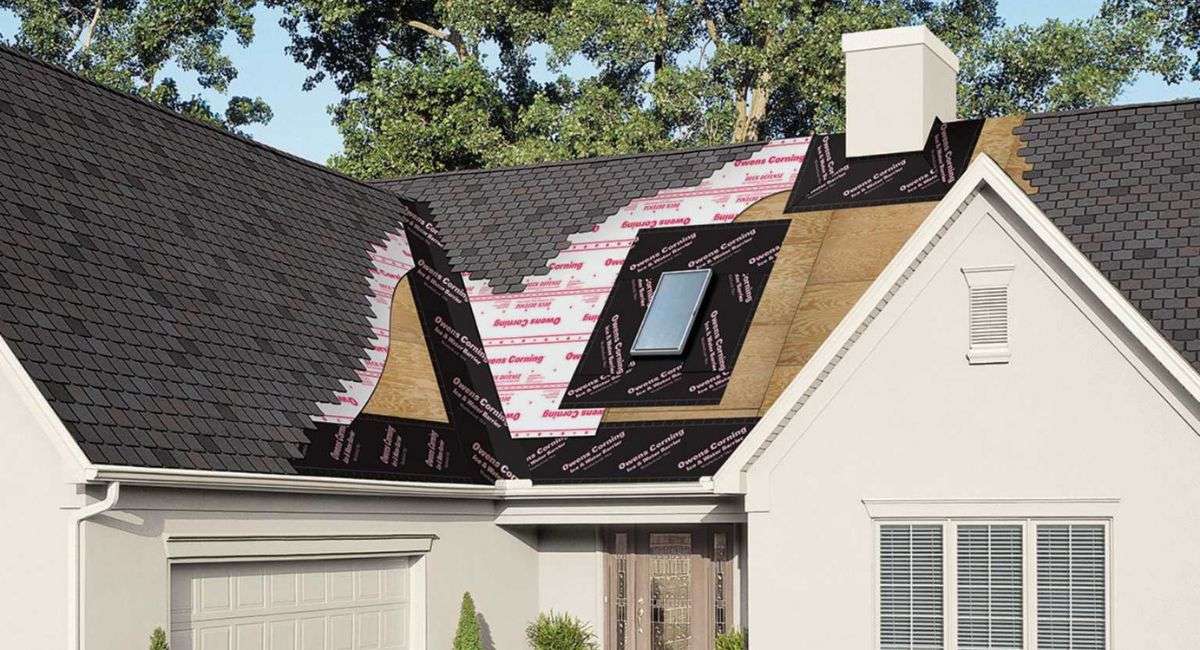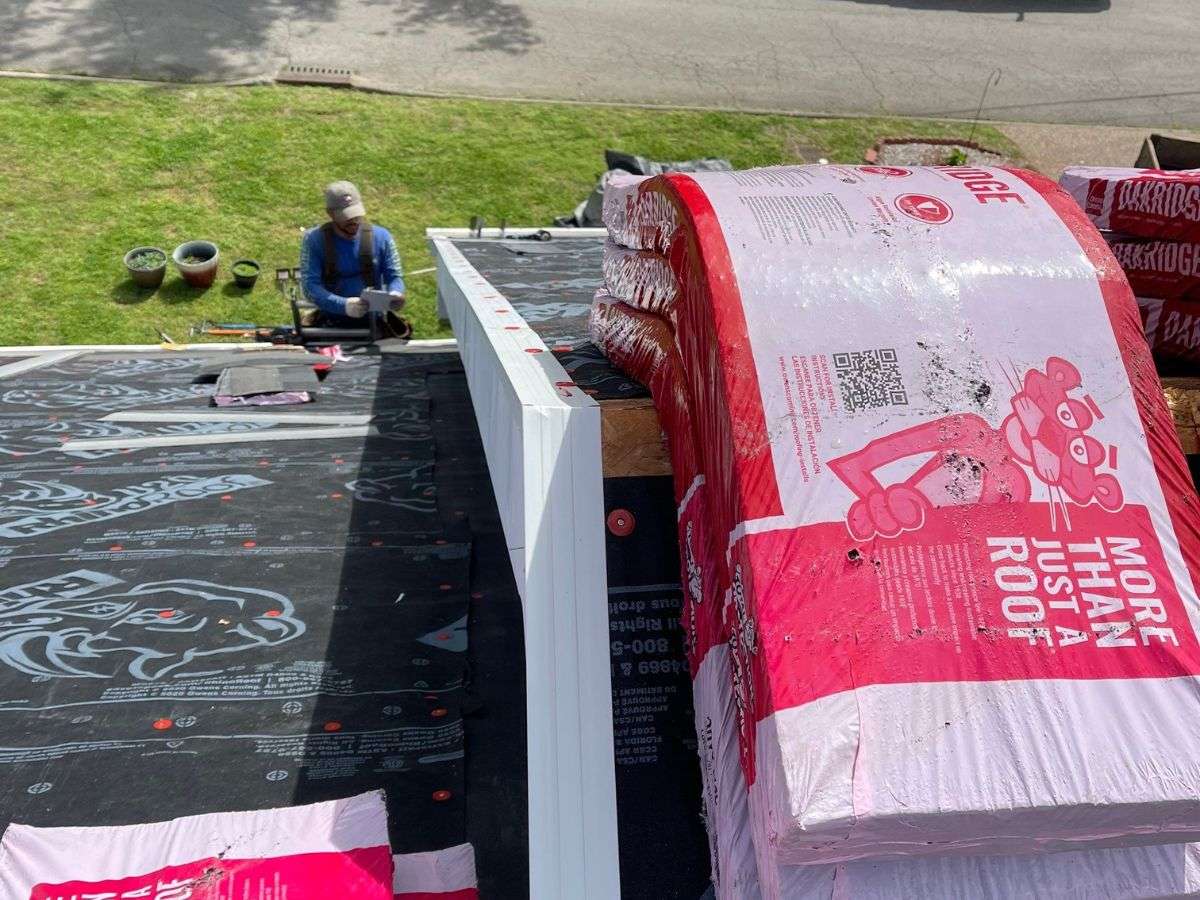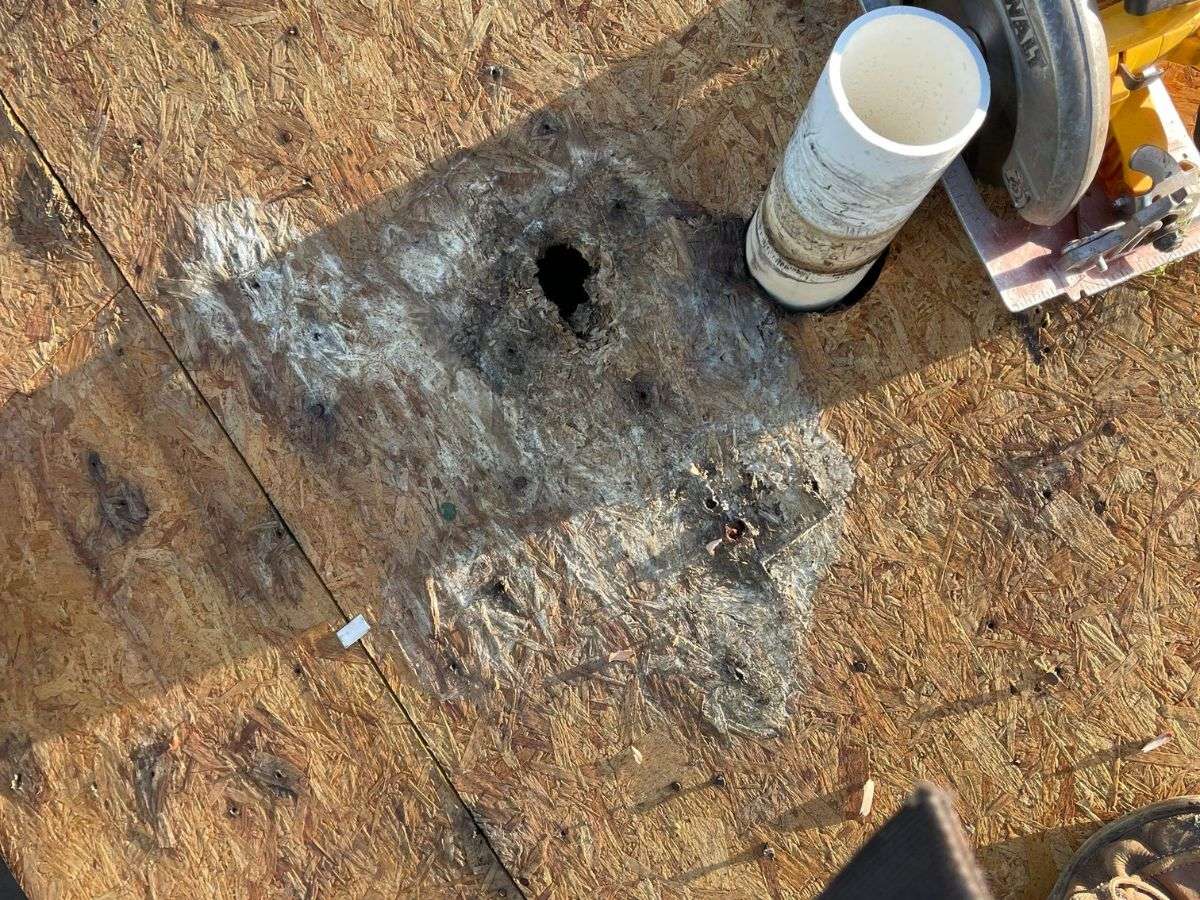Water & Ice Barriers 101: Why They’ll Save Your Roof
A strong and reliable roof is crucial for safeguarding your home. However, in colder regions, excessive snowfall can pose a significant threat, potentially resulting in costly repairs and water seepage. This is where the importance of water and ice barriers becomes evident. These barriers play a vital role in protecting your roof and preventing any damage caused by freezing temperatures and melting snow. By implementing these safeguards, you can ensure the longevity and integrity of your home’s structure, even in harsh weather conditions. In this blog post, we’ll outline the issues of water, ice and snow on your roof, what an ice barrier does and why you should act fast if you don’t have one?

WHAT CAN WATER AND ICE DO TO YOUR ROOF?
During the winter months, a combination of rain, snow, ice, and storms can lead to various issues for your roof. These elements not only pose a threat to your shingles but also impact every component of your roof. Let’s explore several examples that illustrate how water and ice can affect your roof or exacerbate existing problems.
Roof Shingles:
Ice dams can occur when snow melts and freezes again at the roof’s edge. This forms a barrier that hinders proper drainage, resulting in water backing up and seeping under shingles. This repetitive cycle can cause extensive damage to your shingles, making them more vulnerable to leaks.
Roof Deck:
Without a water and ice barrier, any moisture that penetrates your shingles can lead to continuous exposure to moisture from ice dams and heavy snow. This prolonged exposure can cause the roof deck to deteriorate, resulting in a weakened structure that is more prone to collapse or leaks. It is crucial to ensure proper protection to maintain the integrity of your roof.
Attic:
Insufficient ventilation in your attic can contribute to the formation of ice dams. As warm air from your home ascends into the attic, it causes the snow on your roof to melt. However, once it reaches the cooler edges, it freezes, establishing a repetitive cycle that can result in water damage, mold growth, and even structural problems.
Gutters:
Clogged gutters can contribute to the formation of ice dams. When debris blocks the gutters, water cannot flow freely, resulting in backups and potential damage to your roof. Furthermore, the accumulation of snow and ice can add excessive weight to the gutters, straining their connections to the roof and creating additional points of entry for water or ice.
Eaves:
The buildup of snow and ice on your roof can significantly increase the load on your eaves, potentially leading to their collapse. When your eaves become detached or exposed, you become vulnerable to strong winds, and the now-exposed shingles can be torn off from underneath. This compounding effect is particularly true in stormy climates.
Valleys:
Valleys are the juncture points where two slopes of a roof converge, and they are especially susceptible to water damage resulting from ice dams. The accumulation of water in valleys can lead to leaks and, if ignored, even the growth of mold. Additionally, due to their lower elevation compared to the rest of the roofing structure, valleys can experience increased strain from added weight, potentially compromising the integrity of a vulnerable roof.
WHAT IS A WATER AND ICE BARRIER?

A water and ice barrier is a protective layer installed on the roof deck before shingles are applied. It is typically made of a self-adhesive membrane that adheres to the roof deck, creating a waterproof seal. This barrier acts as an additional layer of defense against water and ice infiltration, preventing damage to your roof.
HOW DO I KNOW IF I HAVE ONE OR NOT?
If your home is in an area that experiences harsh winter weather, it is essential to ensure that you have a water and ice barrier installed on your roof. This barrier helps prevent water from seeping under the roof shingles and causing damage to the underlying structure, which can be particularly problematic during freeze and thaw cycles. It’s easy to determine whether you have one by inspecting the eaves of your roof. If there is a protective layer visible, then you most likely have a water and ice barrier.
WHY ACT FAST IF YOU DON’T HAVE A WATER & ICE BARRIER?

Speed is crucial when it comes to installing a water and ice shield, as any moisture exposure without one can cause significant damage. While water intrusion eventually affects all roofs, the key to longevity is addressing these issues proactively and swiftly. A water and ice shield protects your roof when intrusion occurs, slowing the damage to your underlying structure. Without it, rot, mold, and other moisture-related problems can wreak havoc on your roof, potentially costing you thousands.
WHAT’S NEXT?
Water and ice barriers are crucial for protecting your roof from harsh winter weather. They provide an extra layer of defense against water and ice infiltration, preventing damage to your roof’s structure. If you live in a colder climate, ensure that your roof has this safeguard installed to avoid costly repairs and maintain its longevity. Inspect your roof regularly and consult with a professional roofing contractor if needed. Act now to protect your roof with a water and ice barrier and enjoy a well-maintained home all year round!
If you’re located in Tennessee or Georgia, then Roof MD can help! We offer FREE Roof Inspection & Estimates, so book yours today below.
